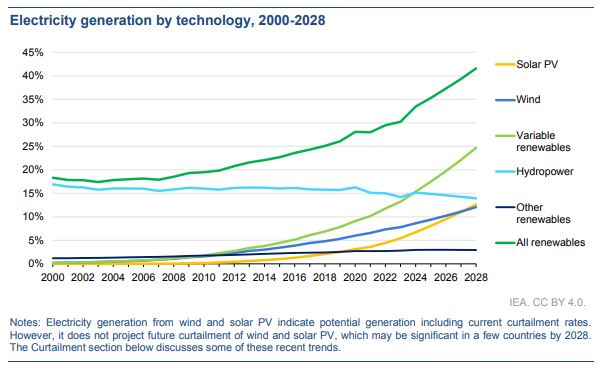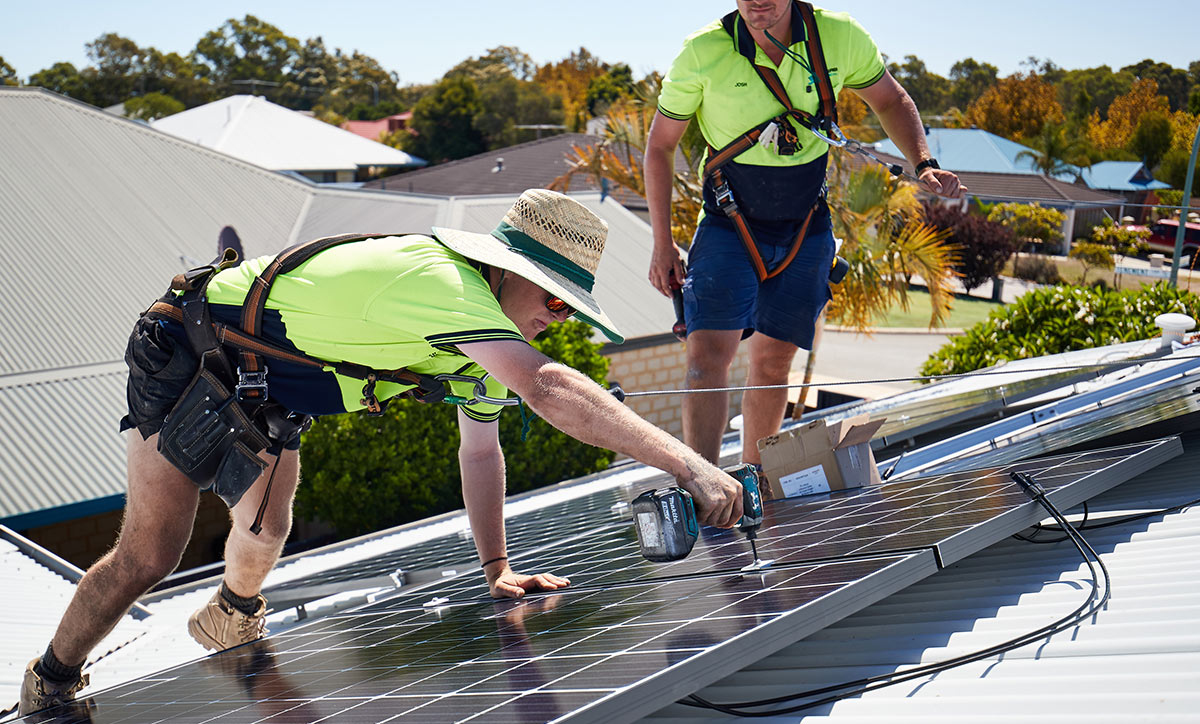The International Energy Agency (IEA) has pointed to grid bottlenecks, a lack of new federal government support, and increasing investment costs as among the reasons for it reining in forecast renewable energy growth in Australia by more than 10%.
The agency also highlighted “continued policy uncertainty” following early achievement of Australia’s Large-scale Renewable Energy Target (LRET) among the reasons for it revising down the country’s forecast renewable energy additions for the 2023-28 forecast period.
“In Australia, a lack of new federal incentives and rising investment costs have delayed the development of new projects,” the IEA said in Renewables 2023, the latest edition of the France-headquartered agency’s annual market report on the sector.
“Notably, the distributed PV segment, which has been the primary source of growth in Australia in recent years, is forecast to experience a faster-than-anticipated decline in installations due to saturation of the power system and increasing grid integration challenges,” the IEA said, noting that governments will need to address the issues or risk falling well short of the tripling of renewable energy capacity by 2030 that was agreed to at the COP28 climate summit in December.
Australia is one of more than 100 countries that backed a pledge made at the summit in Dubai to triple the world’s renewable energy generation capacity by the end of the decade.
“Overcoming grid bottlenecks, streamlining lengthy permitting processes and enhancing system flexibility should be prioritised to accelerate deployment of renewables,” the IEA said, adding that even projects nearing completion in Australia can still be subject to delays with commissioning processes sometimes taking “a year or longer.”

Despite reining in Australia’s forecast growth, the IEA remains bullish on solar power as a whole, predicting that PV and wind will account for 95% of global renewable expansion over the 2023-28 period covered by the forecast.
The amount of renewable energy capacity added to energy systems around the world grew by 50% in 2023, reaching almost 510 GW, with PV accounting for three-quarters of additions worldwide.
IEA analysis shows that under existing policies and market conditions, global renewable power capacity is now expected to grow to 7,300 GW over the next five years. Solar PV and wind account for 95% of the expansion, with renewables overtaking coal to become the largest source of global electricity generation by early 2025.
The report also shows that prices for solar modules in 2023 declined by almost 50% year-on-year, with cost reductions and fast deployment set to continue with global manufacturing capacity forecast to reach 1,100 GW by the end of 2024, significantly exceeding demand.
While the outlook for solar is bright, the report provides a reality check on the momentum behind green hydrogen, assessing how many announced projects are likely to go ahead.
The IEA said that more than 360 GW of electrolyser projects with start dates before 2030 had been announced but only 3% of them had reached financial close or started construction.
The agency anticipates that of all the projects announced worldwide to use renewables to produce hydrogen this decade, only 7% of the proposed capacity is expected to come online by 2030.
“The forecast is also less optimistic for Asia-Pacific, mostly due to uncertainty in Australia over the future of stalled projects,” the IEA said. “One project’s environmental permit had lapsed before it reached financial close, and plans for projects in Bell Bay have been put on hold due to high water and transmission congestion.”
This content is protected by copyright and may not be reused. If you want to cooperate with us and would like to reuse some of our content, please contact: editors@pv-magazine.com.









5 comments
By submitting this form you agree to pv magazine using your data for the purposes of publishing your comment.
Your personal data will only be disclosed or otherwise transmitted to third parties for the purposes of spam filtering or if this is necessary for technical maintenance of the website. Any other transfer to third parties will not take place unless this is justified on the basis of applicable data protection regulations or if pv magazine is legally obliged to do so.
You may revoke this consent at any time with effect for the future, in which case your personal data will be deleted immediately. Otherwise, your data will be deleted if pv magazine has processed your request or the purpose of data storage is fulfilled.
Further information on data privacy can be found in our Data Protection Policy.